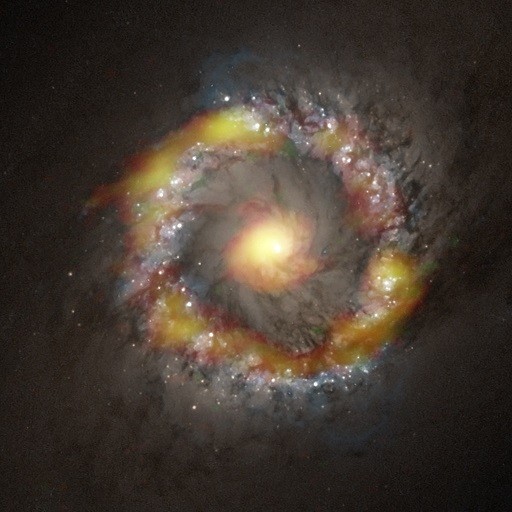Deep within the cores of every large galaxy in the universe, supermassive black holes remain hidden in the center of these galaxies that can measure up to more than a million times the mass of our sun. Now a new study reveals how scientists can measure the mass of these black holes in spiral galaxies, more specifically in barred spiral galaxies.
Using the ALMA telescope (Atacama Large Millimeter/submillimeter Array), scientists have measured the mass of a supermassive black hole located in the center of galaxy NGC 1097 which is a barred spiral galaxy some 45 million light years away.
Researchers have quantified that the black hole inside this galaxy is apparently 140 million times larger than our sun and compared to the black hole in the center of the Milky Way galaxy, the Milky Way black hole is considered to be a lightweight one, possessing only a few million times the mass of our sun.
In order to measure the mass of this black hole, lead author of the study Kyoko Onishi of SOKENDAI in Japan and team measured the distribution and movement of two molecules in the core of the galaxy namely hydrogen cyanide and formylium.
Using ALMA data and observations, the researchers used different models to determine the mass of the black hole that can be considered as the most suitable candidate for a black hole that weighs 140 million solar masses.
Astronomers used different techniques and methods to deduct the mass of a supermassive black hole where each technique is different depending on the type of galaxy under observation.
In the Milky Way galaxy, ground based and space telescopes utilize powerful optical and infrared capabilities to detect the movement of stars in the galaxy however this method is not considered effective for distant galaxies since it requires extremely high angular resolution.
In this new study, ALMA data uses a new and untapped technique that can be used in future observations in exploring spiral and barred spiral galaxies.
Scientists can now use this new method to measure how supermassive black holes evolve together and how they feed off each other in order to gain new insight about the relationship of supermassive black holes and their host galaxies.



























